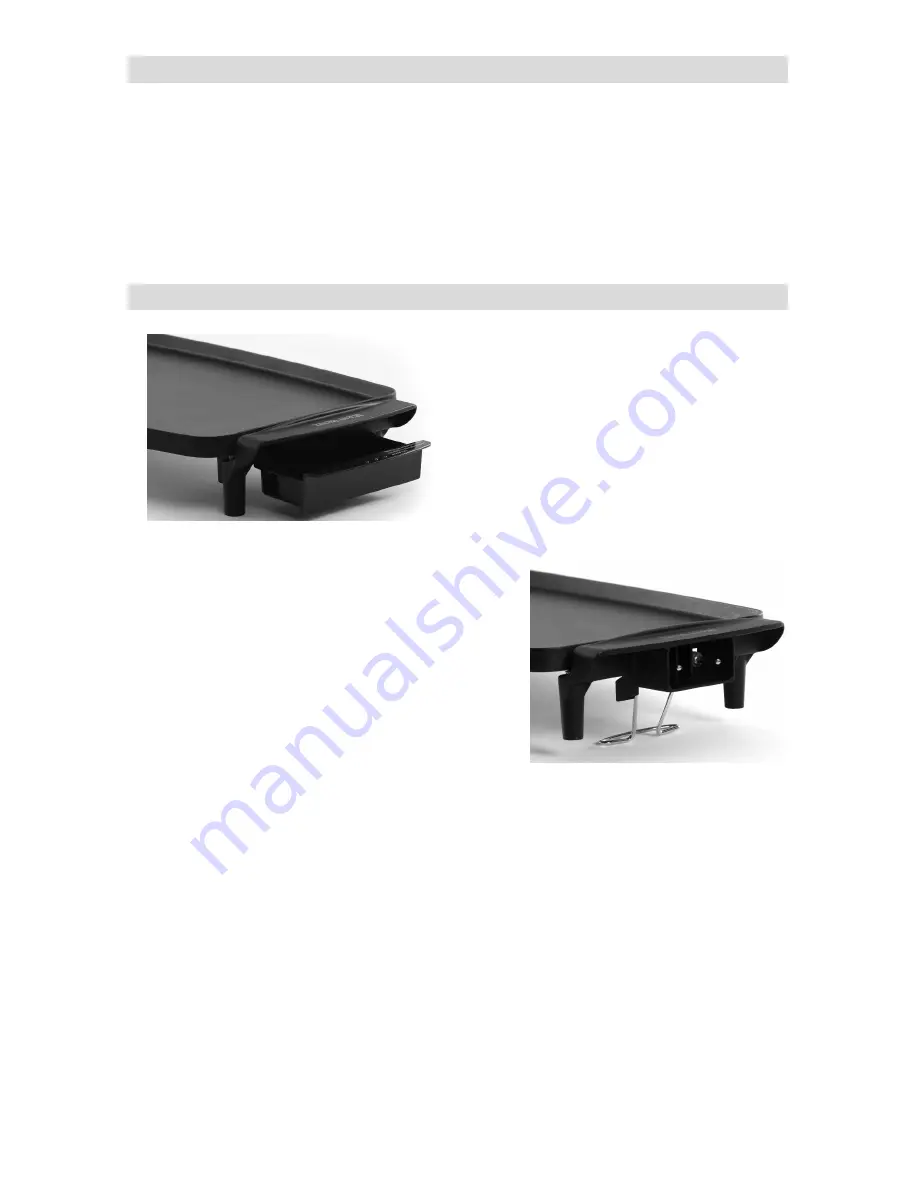
4
B
EFORE
U
SING FOR THE
F
IRST
T
IME
1. Wash the griddle and grease tray thoroughly in hot soapy water with a dishcloth
or sponge to remove any manufacturing oils. Rinse thoroughly and dry. Be
sure temperature control socket is completely dried. Slide the grease tray into
the holder below the drain hole. Always use the griddle with the grease tray in
place to collect grease that drains from foods while cooking.
2. Condition the non-stick finish by lightly wiping two teaspoons of cooking oil with
paper toweling or a soft cloth over the entire, cool, surface. Let the cooking oil
remain on the finish. Do not use butter or shortening to condition the non-stick
surface.
U
SING
Y
OUR
G
RIDDLE
1. Always use the griddle on a dry, level,
heat-resistant surface. Do not operate
the griddle when hands are wet.
Attach the temperature control to the
griddle. Be sure that the dial is set to
“OFF.” Be sure that the grease tray is
in position below the drain hole on the
griddle surface. Do not block airflow
under griddle. Plug the cord into a 120
volt, AC electrical outlet ONLY. Do
not use any thermo-plug other than that which came with your griddle.
2. To aid in the drainage of grease, open the tilt
leg into position to angle the griddle. See
image to the right.
3. Refer to the temperature guide in this
booklet for selecting correct heat settings. If
food is taken directly from the freezer, use
the heat setting as indicated in the guide, but
allow longer times to cook. Most foods will
require a preheat period.
4. The signal light on the temperature control
will go out when the cooking temperature has been reached; add food. Heat
may be increased or decreased, depending upon personal preference and the
type or amount of food being prepared. The signal light will go on and off
periodically to indicate that proper temperature is being maintained.
5. Foods may be prepared with or without fats. When frying, the use of a small
amount of butter, fat or oil will improve the flavor, color and crispness of foods.
When frying fatty foods such as bacon or sausage, excess grease will drain into
the grease tray below the drain hole on surface of griddle. Do not remove the
grease tray during cooking. Always allow the griddle to cool completely before
removing the grease tray.
6. Nylon, plastic, wooden or rubber cooking tools are recommended for use on the
non-stick surface. Smooth-edged metal cooking tools may be used with care.
Do not use sharp-edged cooking tools such as forks, knives or food choppers as
scratching may occur. Minor scratching will affect only the appearance of the
finish; it will not harm its non-stick property.































